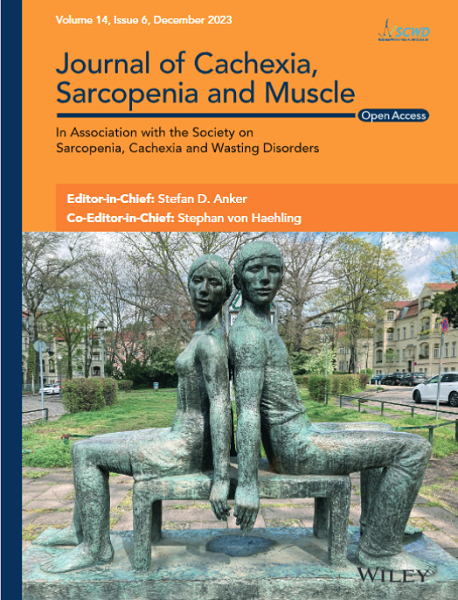BIO101 in Sarcopenic Seniors at Risk of Mobility Disability: Results of a Double-Blind Randomised Interventional Phase 2b Trial
Abstract
Background
Sarcopenia is a progressive muscle disorder that may lead to mobility disability. No pharmaceutical interventions are currently available, and treatment relies on physical exercise and nutrition. The aim of SARA-INT was to investigate whether BIO101 (20-hydroxyecdysone), an activator of the MAS receptor, is safe and improves muscle function and physical performance of community dwelling older sarcopenic patients.
Methods
SARA-INT was a randomised three-arm interventional study (BIO101 175 mg bid /350 mg bid/placebo) with a planned 6-month treatment (up to 9 months in 50 subjects). Eligibility criteria for sarcopenia were meeting FNIH criteria for sarcopenia and Short Physical Performance Battery (SPPB) score ≤ 8/12 in men and women aged ≥ 65 years. Primary endpoint was the change from baseline (CFB) in gait speed (GS) measured by 400-m walking test (400MWT), secondary endpoints being CFB in other physical performance tests.
Results
A total of 233 participants were randomised (mean age 75.5 ± 7.12; 54.3% female), of whom 232 and 156 were included in the full analysis set (FAS) and per-protocol (PP) populations, respectively. Due to COVID-19 pandemic, 55% of on-site end-of-treatment efficacy assessments were lost, reducing the studies' power. In the primary analysis (mix of 6/9 months), BIO101 350 mg bid treatment after 6/9 months was associated with an improvement in the 400MWT of 0.07 m/s versus placebo in the FAS population (not significant) and of 0.09 m/s in the PP population (p = 0.008). BIO101 350 mg bid treatment effect on the 400MWT GS was also observed in pre-defined subpopulations at higher risk of mobility disability (0.0474 m/s for slow walkers, 0.0521 m/s for obese and 0.0662 m/s for chair stand sub-score ≤ 2 from SPPB in the FAS population), with a trend for a dose response. BIO101 showed a good safety profile at both doses (number of subjects with related treatment emergent adverse events (TEAEs) of 13 (16.0%), 10 (13.3%) and 10 (13.5%) in the placebo, 175 mg and 350 mg BIO101 groups, respectively).
Conclusions
After 6 to 9 months of treatment, BIO101 350 mg bid showed strong trends consistent with a clinically relevant effect on the 400MWT GS, close to the minimal clinically important difference (MCID) in sarcopenia (0.1 m/s). This was also shown in predefined subpopulations at higher risk of mobility disability. BIO101 showed a good safety profile. Taken together, efficacy and safety data of this Phase 2 trial encourage us to pursue further development of BIO101 for the treatment of sarcopenia.


 求助内容:
求助内容: 应助结果提醒方式:
应助结果提醒方式:


